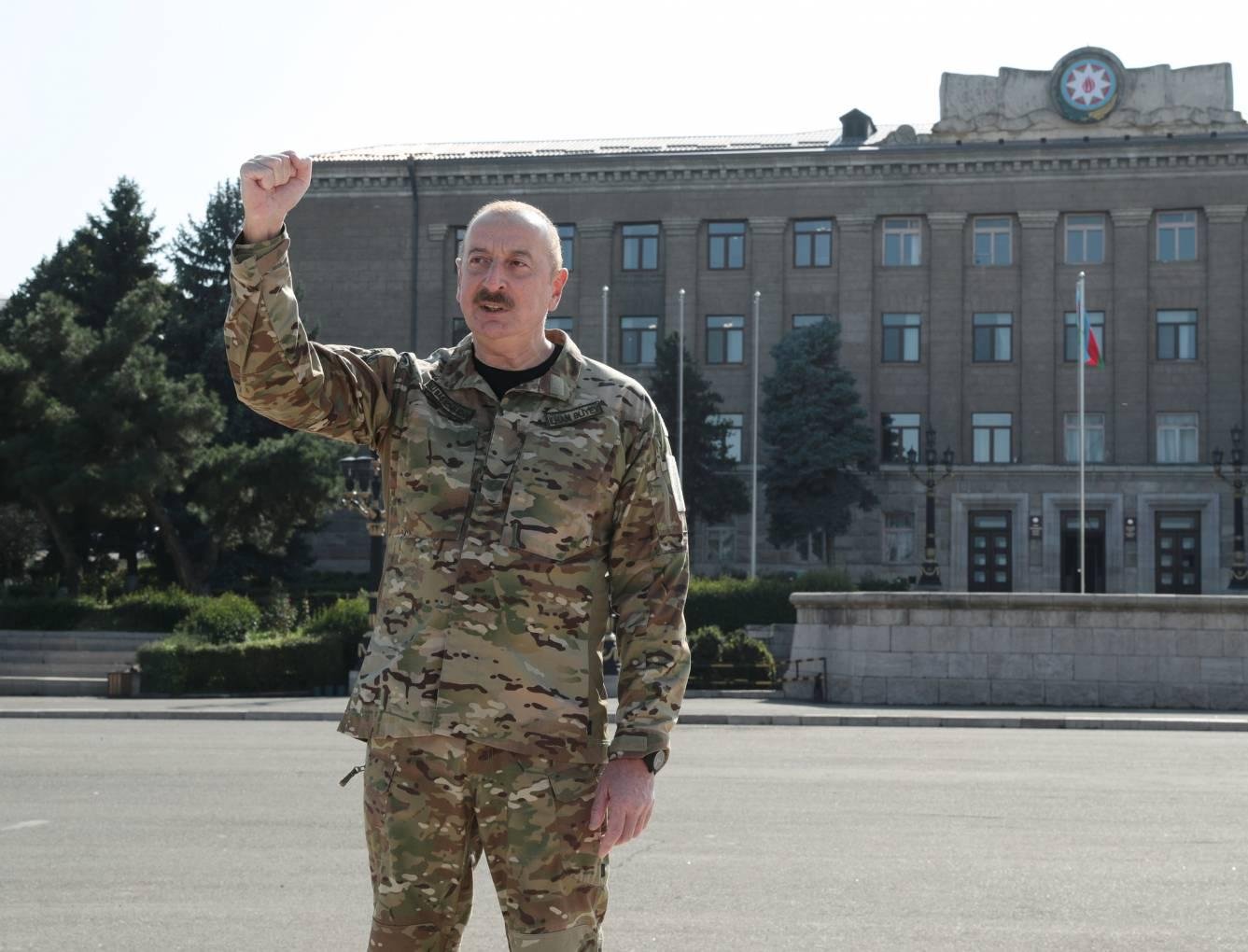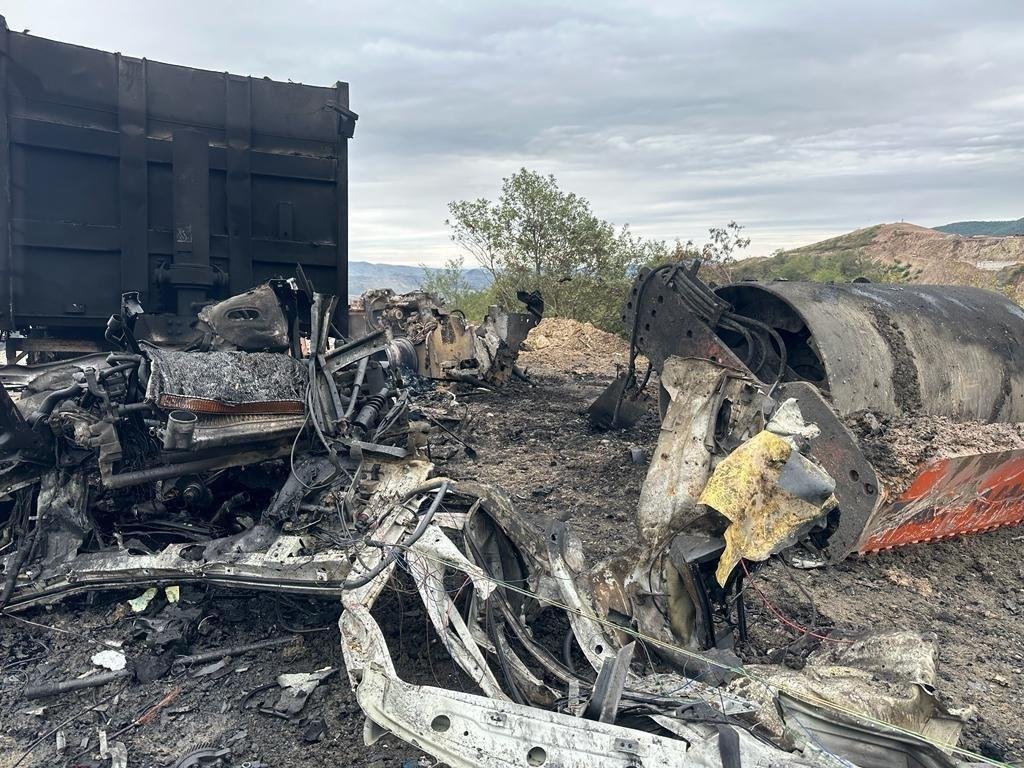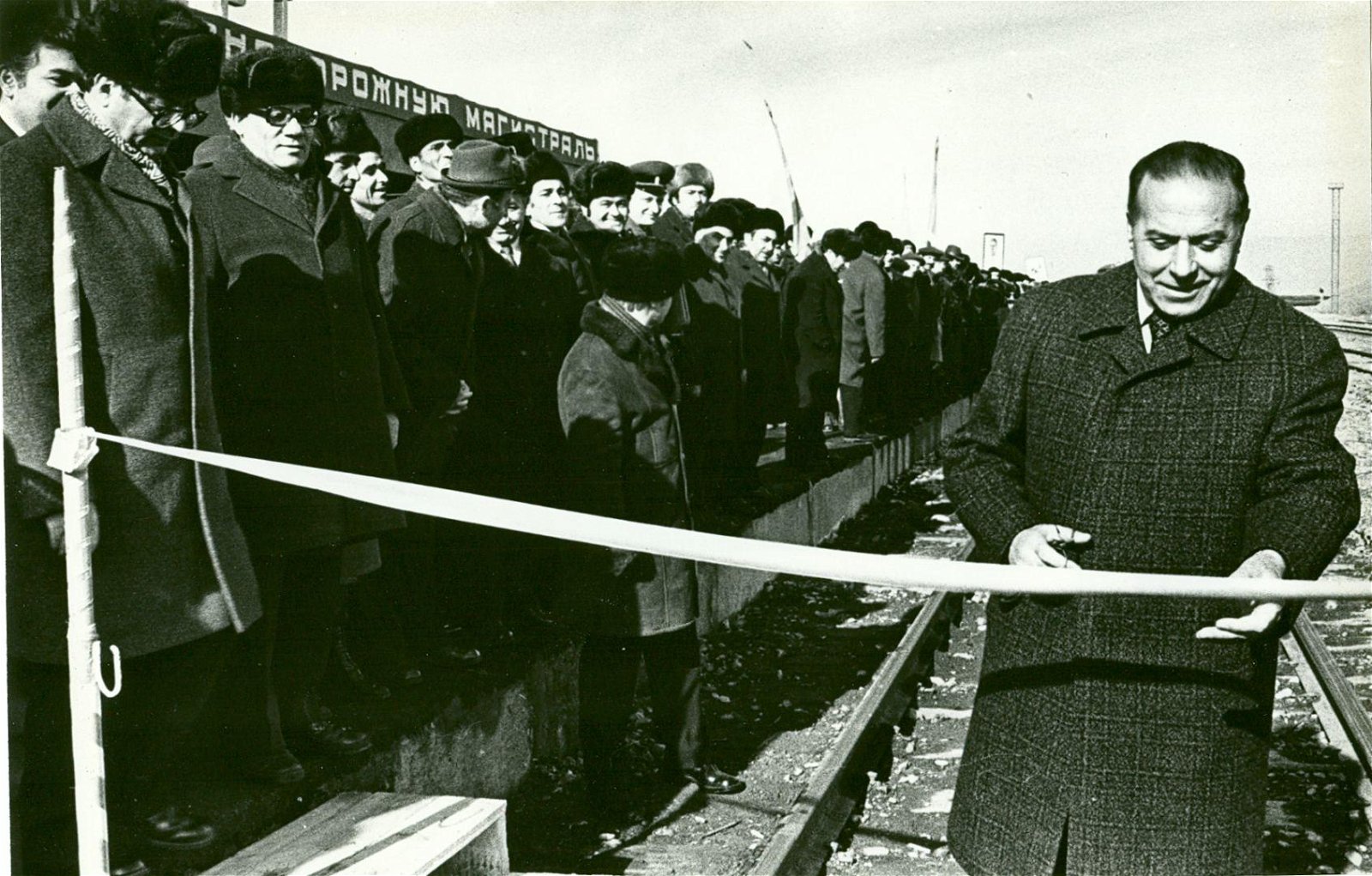Azerbaijan returns to Khankendi, restores sovereingty over entire Karabakh region Stepan out, Khan in
The people of Azerbaijan burst on October 15 into tears of joy seeing President Ilham Aliyev hoist the State Flag of Azerbaijan in the territories cleared of separatists. It was almost a festival for ten million population of the country and tens of millions of Azerbaijanis living overseas.
President Aliyev visited the city of Khankendi, the town of Khojaly, as well as the settlements of Asgaran and Aghdara, and the Sarsang Water Reservoir to raise the tricolour Azerbaijani flag in the reclamation of sovereignty over these territories after three decades.
President Aliyev’s tour of the lands, once occupied by Armenia and later put under separatist rule, was a proud moment we, the Azerbaijanis, have been waiting impatiently since September 19, when our army irreversibly ousted the separatists from our ancestral territories. In a broader context, we have been dreaming of this day for more than thirty years.
“The primary reason we are here today is the people of Azerbaijan, the sons of Azerbaijan. We have raised a young generation ready to die for the Motherland, our lands, and they were confronting death. May Allah have mercy on all our martyrs. We bow our heads to their souls. We, the people of Azerbaijan, are in their eternal debt,” President Aliyev said in his speech after raising the State Flag in Khankendi.

President Aliyev delivers a speech in Khankendi, Karabakh, Azerbaijan, October 15, 2023
He said Azerbaijan has been pushing for a peaceful end to the former Nagorno-Karabakh conflict for thirty years, recalling his participation in negotiations during seventeen years of his tenure since 2003. However, according to President Aliyev, Armenia did not take heed of Azerbaijan’s peaceful efforts and, vice versa, attempted to consolidate its occupation policy leading to the 44-day war of 2020 and the counterterrorism operation of 2023.
“Even when the Second Karabakh War stopped, the people of Azerbaijan were aware that I knew what I was doing. Less than three years have passed since that day, and we are here today, in Khankendi, in the centre of Khankendi, standing under the National Emblem and the Flag of Azerbaijan. It is a great happiness and a historic event,” he said.
Following the dissolution of the Soviet Union in 1991, Armenia launched a full-scale military campaign against Azerbaijan, resulting in the longest and deadliest war in the South Caucasus region. The war ended in a ceasefire in 1994, with Armenia forcibly occupying 20 per cent of Azerbaijan’s internationally recognized territories. This occupation led to the deaths of over 30,000 Azerbaijanis and the expulsion of one million others in a brutal ethnic cleansing campaign conducted by Armenia.
On September 27, 2020, the Armenia-Azerbaijan conflict took a violent turn when Armenia’s forces deployed in occupied Azerbaijani lands shelled military positions and civilian settlements of Azerbaijan. During counter-attack operations that lasted 44 days, Azerbaijani forces liberated over 300 settlements, including the cities of Jabrayil, Fuzuli, Zangilan, Gubadli, and Shusha, from a nearly 30-year-long illegal Armenian occupation. The war ended with the signing of a statement on November 10, 2020, under which Armenia also returned the occupied Aghdam, Kalbajar, and Lachin districts to Azerbaijan.
Russia sent a temporary peacekeeping to Azerbaijan under the trilateral statement signed on November 10, 2020. The peacekeepers were deployed in certain parts of the Karabakh region of Azerbaijan populated by the ethnic Armenian minority. Paragraph 4 of the statement urged the peacekeepers to ensure an immediate withdrawal of the Armenian army formations from Karabakh. However, it went unfulfilled over the past three years.
The armed formations of the Armenian Armed Forces in Karabakh committed multiple deadly provocations and offensives, including mine terror, killing dozens of Azerbaijani servicemen and civilians. On September 19, four police officers and two civilians were killed in a mine explosion in the Khojavand district. On the same day, two servicemen of the Azerbaijani army stationed in the Aghdam district were wounded by the Armenian armed formations.

A truck trapped by an Armenian landmine explosion killing four Azerbaijani police officers, Khojavand, Karabakh, Azerbaijan, September 19, 2023
Azerbaijan Armed Forces launched on September 19 local anti-terrorist measures to neutralize illegal Armenian armed formations and their military infrastructure in the Karabakh region.
By the time of the cessation of hostilities on September 20, the Azerbaijani military disabled artillery systems, radio-electronic warfare, military equipment, ammunition depots, military strongholds, and shelters of the Armenian army formations stationed in the Karabakh region.
In addition, more than 90 combat posts and strategically important positions of the Armenian military formations were taken under control during the one-day operation. Seven military vehicles, 4 mortars, one tank, 2 infantry fighting vehicles, as well as a large number of weapons and ammunition were also captured as trophies.
On September 20, the Defence Ministry of Azerbaijan announced the end of the local counter-terrorism measures in Karabakh after the separatists agreed to complete disarmament by laying withdrawing from their positions, laying down arms, and handing over military equipment. The Azerbaijani army launched immediate confiscation of weapons, ammunition, and equipment on the same day.
On September 21, the Azerbaijani authorities hosted the representatives of Karabakh’s Armenian minority to discuss their reintegration into local society. However, despite Baku’s calls to stay and reintegrate, and security guarantees, the Armenian population have voluntarily left Karabakh for Armenia.
Peaceful coexistence
In his speech in Khankendi on October 15, President Aliyev recalled the legacy of Azerbaijan’s National Leader Heydar Aliyev in Karabakh, including his activities that established a peaceful coexistence of Azerbaijanis and Armenians in Khankendi and in entire Karabakh. He said during Heydar Aliyev’s tenure as the First Secretary of the Soviet Azerbaijan’s Communist Party from 1969 to 1982, no single incident took place between Azerbaijanis and Armenians.
“There was a time when the Azerbaijanis and Armenians lived in friendship not only in Khankendi but also in Karabakh, Baku, Gandja, Irevan, Goycha, Zangezur, Daralayaz, and Basarkechar. I remember those years. After Heydar Aliyev came to power in Soviet Azerbaijan, some nationalist forces that had existed in Karabakh until then completely withdrew for precisely 18 years,” the Azerbaijani president stated.
According to President Aliyev, the construction of the Sarsang Water Reservoir, where he raised the Azerbaijani flag, in 1976 was initiated by Heydar Aliyev as part of his investment strategy. A railway was built from Aghdam to Khankendi, a higher education institution was established, and most of the buildings in Khankendi were built, as well as agriculture was on the rise supplying 100,000 tons of grapes per year, under Heydar Aliyev’s leadership.

National Leader Heydar Aliyev at the inauguration of the Aghdam-Khankendi railway in Khankendi in 1979
According to archival documents, Khankendi was built at the end of the 18th century as a residence for the Azerbaijani Karabakh khans. The settlement was built 10 kilometres from the capital of the khanate, Panahabad (modern-day Shusha) to establish a resort town for the khans. In the first years, only the Khan's family and his relatives lived here, naming it as "Khan's village" or Khankendi. In the 20th century, it began to develop as a new industrial and cultural centre of Azerbaijan.
Khankendi was a significant economic and industrial hub in Karabakh before its occupation by the Armenian forces in 1991. It was acclaimed as a vital centre of the light and food industry, electrotechnnology, agriculture, as well as the production of silk, dairy products, wine, carpets and more.
Khankendi was invaded by the Armenian forces in 1991. Shortly after the end of the First Karabakh War in 1994, Yerevan propped up a separatist regime in the Karabakh region of Azerbaijan, announcing Khankendi as their headquarters. The city was renamed as “Stepanakert” after Stepan Shaumyan, an Armenian-origin Soviet politician, who was among the masterminds of mass terror campaigns against Azerbaijanis in the early 1900s. The history and toponyms of the Azerbaijani city were deliberately falsified and altered. Until recently, the separatists claimed it to be the capital of the “independent Artsakh republic”, an unrecognized entity in the sovereign lands of Azerbaijan.
Today, “Artsakh” is going through a self-dissolution process together with its “Stepanakert”. “Khan returned home”, i.e. Azerbaijanis returned to Khankendi. And this return is the harbinger of our eternal stay here. We will not allow anyone to once again occupy our ancestral lands. As President Aliyev said:
“The Flag I raised today will fly here forever, and we will live here forever. Karabakh is ours, Karabakh is Azerbaijan!”








